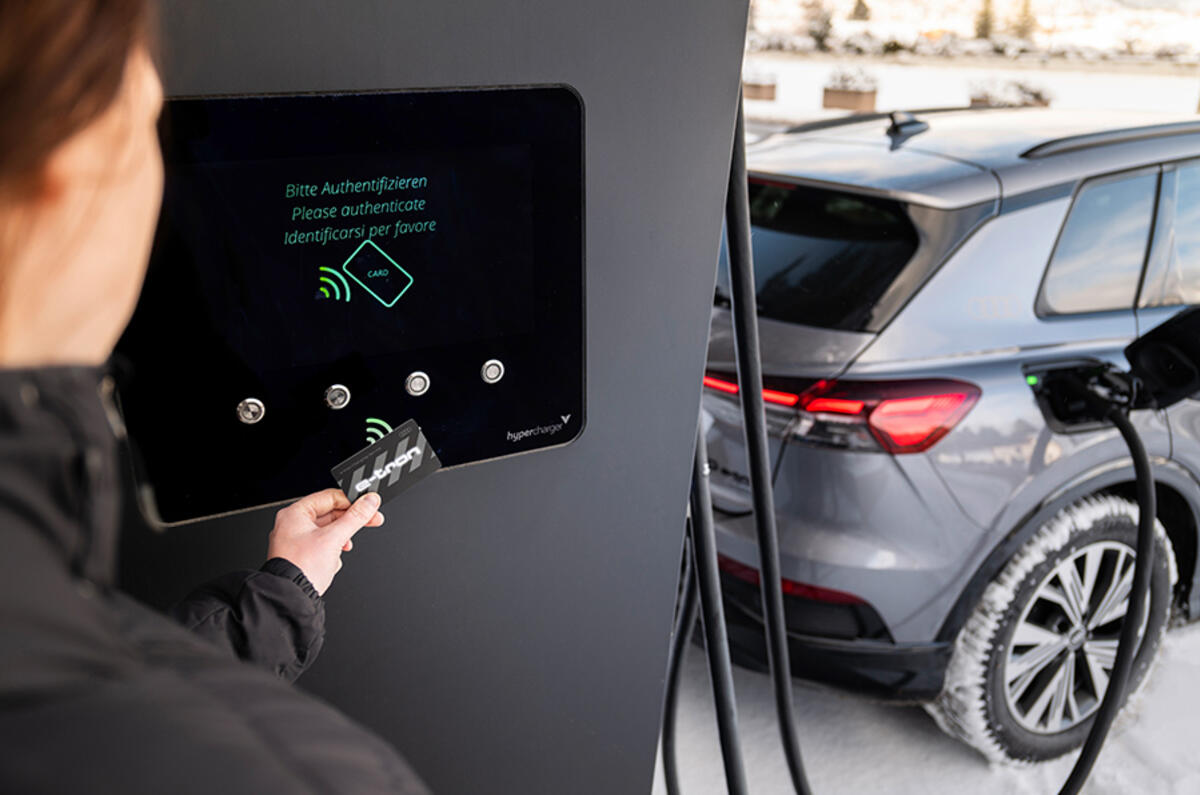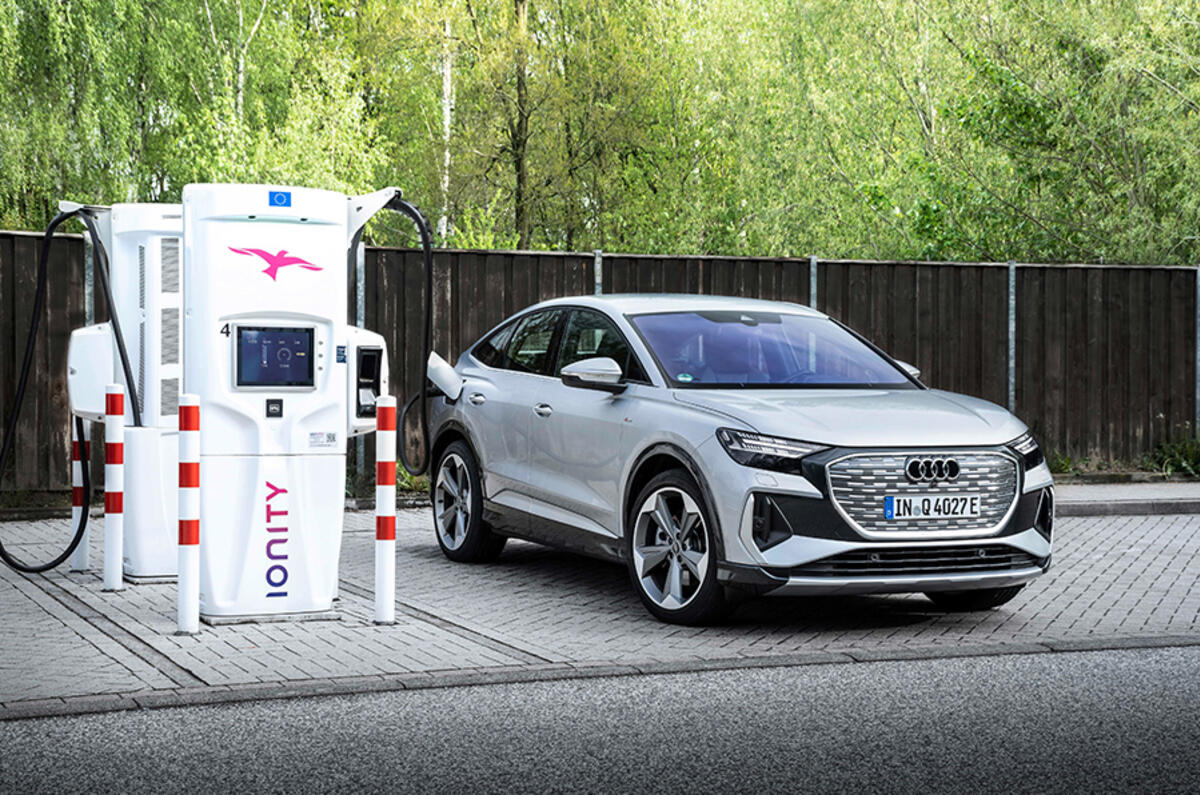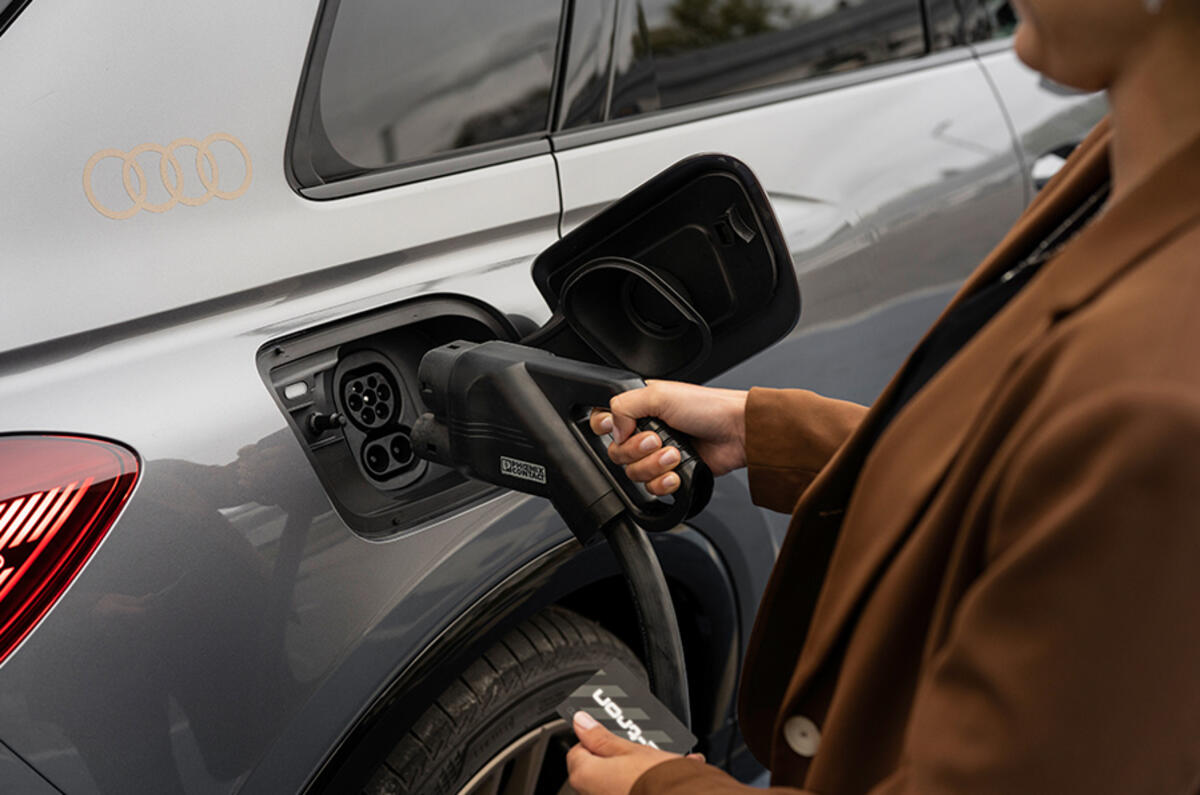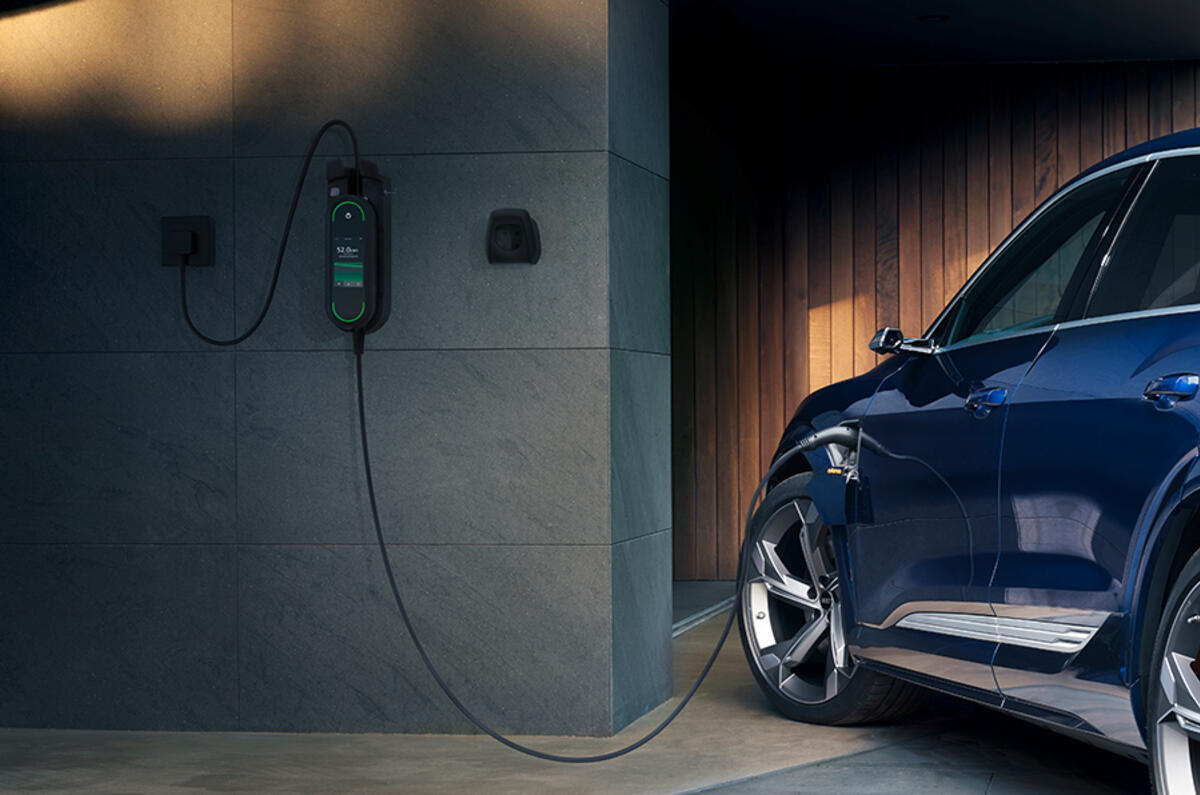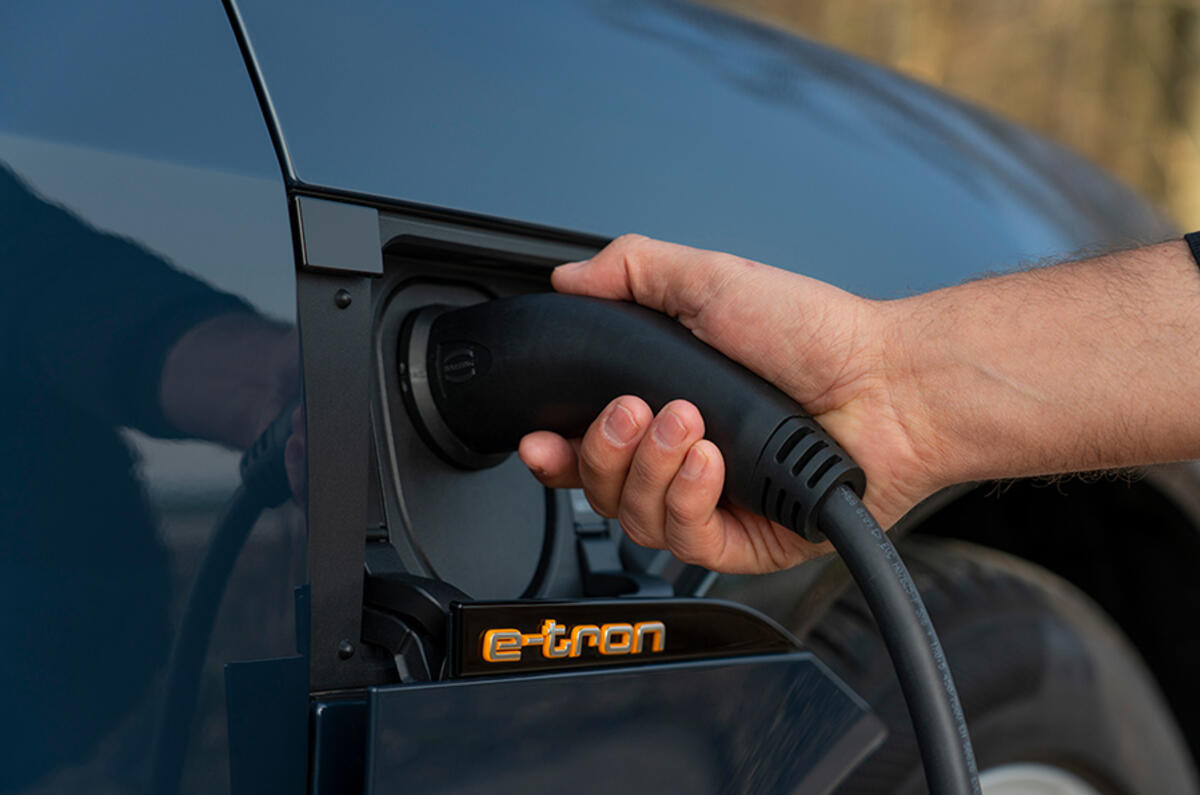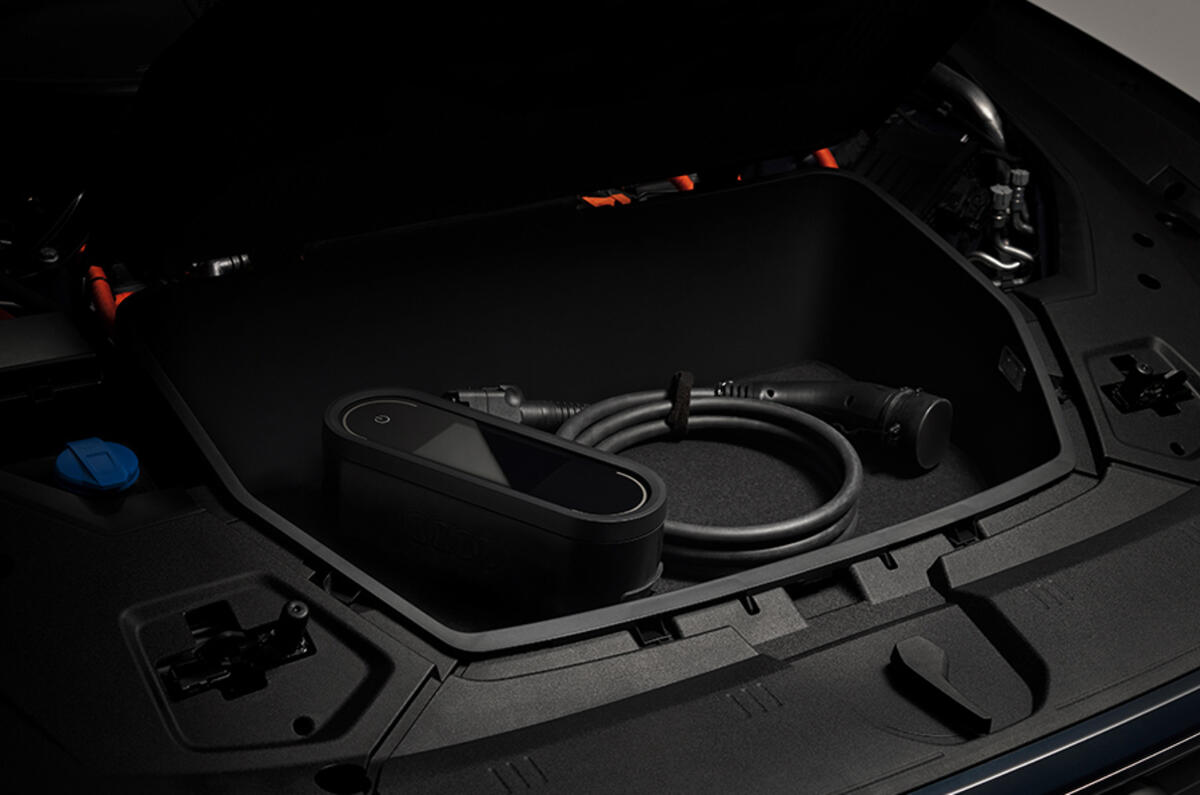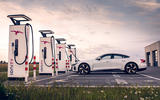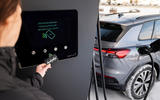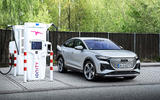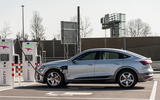When making the switch to an electric car, there’s a lot to learn about the technology that underpins them. From EV to PHEV and from amps to volts, there’s a wealth of jargon, acronyms and initialisms to get your head around.
That’s why we’ve partnered with Audi and its fast-growing line-up of all-electric e-tron models to break it all down, with a simple easy-to-understand glossary of electric car tech and terminology. We’ve also pulled together an equally comprehensive guide to all the ins and outs of electric range and recharging.
Learn more about the Audi e-tron range.
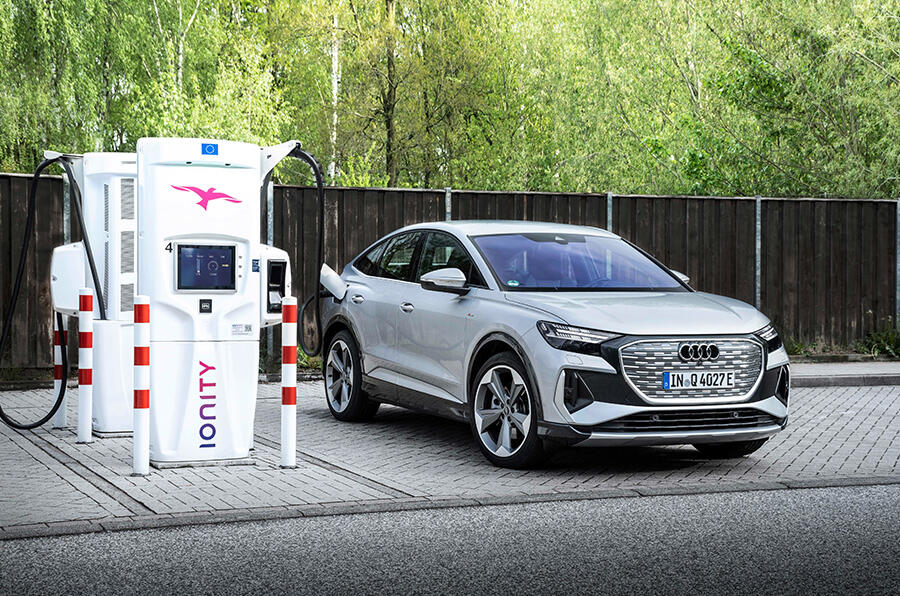
Electric car terminology
After decades of horsepower, miles per gallon (mpg) and grams per kilometre of CO2 (g/km), making the switch to an electric car means that there’s a lot of new electric terminology to get used to. So, let’s start with the basics:
Volts (V): A measure of the ‘oomph’ in your car’s electric system, which is highly relevant for charging. Traditional old-school car batteries run at 12V, but modern electric cars such as the Audi e-tron use a 400V electric system. The Audi e-tron GT takes it a step further, boasting next-gen 800V charging, which – with a 270kW ultra-rapid charger – can add around 144 miles of range in as little as 10 minutes.
AC (Alternating Current): AC is an efficient way of transmitting electricity over long distances, such as in the UK’s National Grid. Because AC is less powerful, it’s best for long, slow charging. As it’s ‘fresh off the grid’, it’s also cheaper to use. You’ll use AC when charging at home, or at public 7kW-43kW slow and fast chargers, typically using a Type 2 cable.
DC (Direct Current): DC is a powerful way to charge electric cars. You’ll use DC when charging at rapid 50kW-100kW chargers or ultra-rapid 100kW+ chargers, which offer fast bursts of charge to top up your battery quicker – helping you get more range or be on your way in a shorter time. As DC chargers need to convert AC to DC locally, they’re slightly more expensive to use – but still typically cheaper than petrol or diesel.
kW (kilowatts): As the old joke goes: ‘Watt is the unit of power?’. Kilowatts (kW) is a way to measure a car’s power that is particularly relevant to electric cars, although many brands still provide familiar mechanical horsepower (hp) or metric horsepower (PS) figures. So, with 1kW equal to 1.34hp, the entry-level Audi 40 Q4 35 e-tron offers 125kW, 170PS or 168hp.
Find out more about the Audi Q4 e-tron
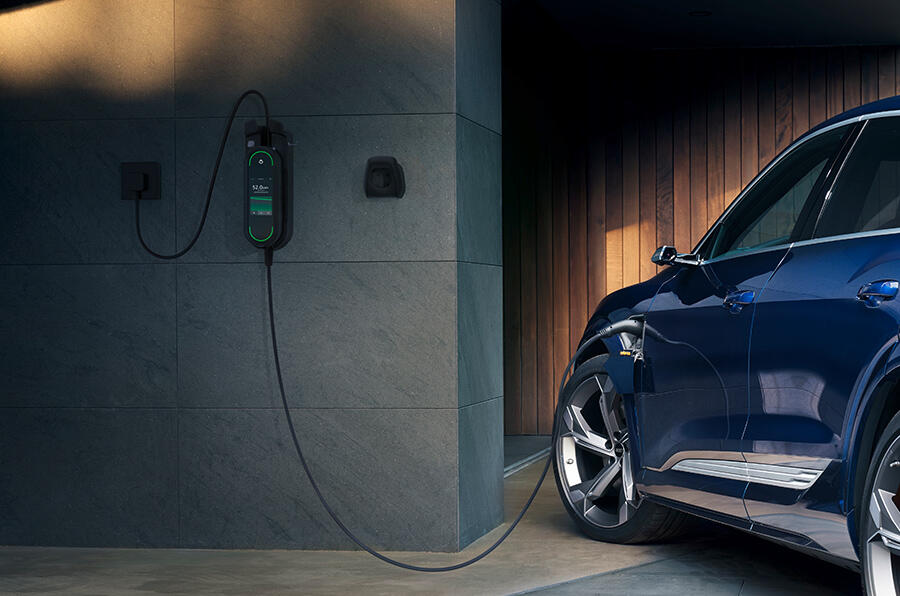
kWh: battery capacity (kilowatt hours): Kilowatt hours can refer to the capacity of your electric car’s battery, or how much power you use to charge it (see below). When it comes to battery size, the higher the kWh, the more miles you can do between charges. For example, the 13kWH battery in the Audi A3 Sportback 40 TFSI e plug-in hybrid offers up to 40 miles of electric range, while the 82kWh battery in the Audi Q4 Sport 40 e-tron offers up to 314 miles of range.kWh: electric charging (pence per kilowatt hour): Kilowatt hours is also a measure of how much it costs to charge an electric car, in pence per kWh. Obviously, energy prices are in a state of flux right now, with the April 2022 UK average price cap rate currently sitting at 28p per kWh. However, many home energy providers offer special rates for off-peak overnight electric car charging that can be anywhere from 15p per kWh to as low as 5p per kWh. Charging costs at public chargers can be measured either in pence per kWh or time spent at the charger. To roughly calculate charging costs, multiply (battery size) x (% of charge) x (pence per kWh). So, a big recharge of the Audi Q4 e-tron’s 82kWh battery (76.6kWh net capacity) from 20% to 100% at 28p per kWh would cost just £17.16 or just 6.8 per mile. Pick the right home energy supplier, and charge overnight on an even more cost-friendly dedicated EV tariff, and it could be even cheaper.
Miles per kWh: Miles per kWh is the new miles per gallon (mpg). It’s a measure of how efficiently an electric car is working – based on factors such as the car’s aerodynamics, weight and rolling resistance, as well as the efficiency of its battery and electric motors and how efficiently you’re driving. The Audi Q4 Sport 40 e-tron has an 82kWH battery that offers up to 314 miles of range on the WLTP cycle. That works out at nearly 3.8 miles per kWh, which is incredibly efficient for a family-sized all-electric SUV.
WLTP (Worldwide Harmonised Light Vehicle Test Procedure): New EU legislation for measuring all cars’ performance – particularly fuel and energy efficiency. It was introduced in 2017 to replace the old New European Driving Cycle (NEDC) test and is based on real-world driving performance to offer more accurate results. For petrol or diesel cars, it determines their fuel efficiency (mpg) and CO2 emissions (g/km). With electric cars, it is used to measure their driving range.
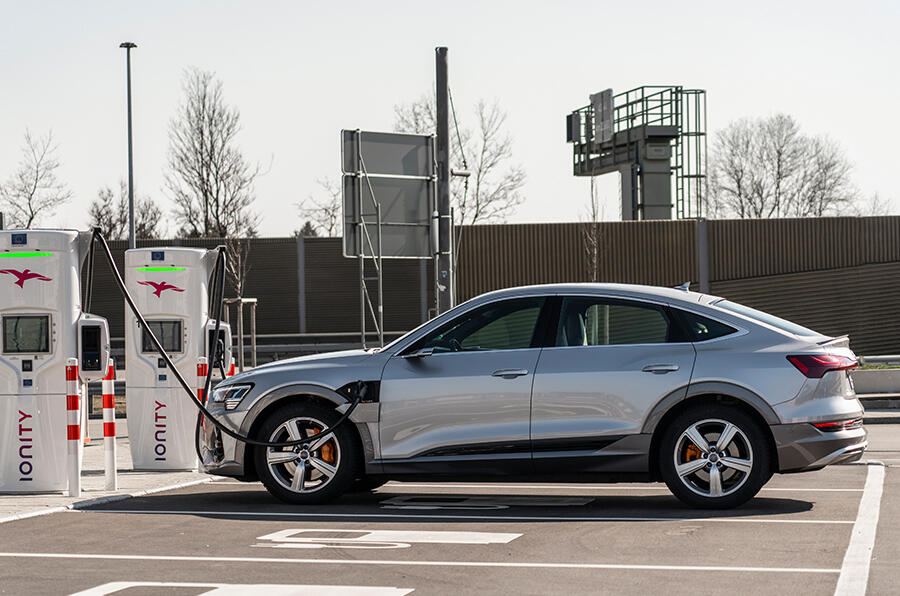
Electric car types
There isn’t just one way to go electric, so here’s a guide to all of your electric options – from mild hybrids to all-electric and even fuel-cell vehicles.
ICE (internal combustion engine): Shorthand for a standard petrol or diesel engine, rather than an hybrid or electric car.
AFV (alternately fuelled vehicle): Any ‘electrified’ car that has a battery and electric motor as part of its powertrain to improve fuel efficiency or reduce CO2 emissions – whether it’s a hybrid, plug-in hybrid, all-electric car or a hydrogen-powered car
BEV (battery electric vehicle) or EV (electric vehicle): A different way to describe a pure all-electric model – such as the Audi e-tron SUV or Sportback, the Audi Q4 e-tron or the Audi GT e-tron.
Hybrid: Any model that combines a petrol or diesel engine with an electric powertrain, such as a mild hybrid (MHEV) or a plug-in hybrid (PHEV).
MHEV (mild-hybrid electric vehicle): Mild hybrids blend a petrol engine with an electric motor and a small lithium-ion battery. They can’t be plugged in for low-cost home or public recharging, which means they only offer limited electric range for short periods – such as pulling away from standstill, or in stop-start traffic. As a result, they only offer slight improvements in CO2 emissions or fuel economy compared to a plug-in hybrid (PHEV).
PHEV (plug-in hybrid vehicle): Plug-in hybrids blend a petrol engine with an electric motor and a lithium-ion battery to enable the car to travel on all-electric power for some distance. Take the Audi A3 Sportback 40 TFSI e. Its 13kWh battery and 53bhp motor offer up to 40 miles of all-electric range – more than enough for an average UK drivers’ typical daily driving, which according to Audi, can be less than 25 miles for 95% of journeys. When you need more oomph, the electric and petrol motors work together to offer 201bhp and 258lb-ft of torque. Doing lots of all-electric journeys, using low-cost home and public recharging to top-up your battery, means fuel consumption up to 256.8mpg and CO2 emissions as low as 26g/km on the WLTP combined cycle, slashing your fuel costs, and generating low benefit-in-kind (BIK) company car rates.
Find out more about Audi’s extensive range of plug-in hybrids
FCEV (fuel cell electric vehicle): An electric car that uses hydrogen to make its own electric power directly, rather than being recharged from the grid. Fuel cell electric vehicles combine hydrogen and oxygen to create electrical energy, with zero CO2 emissions and only a few drops of water as a by-product. They are quicker to refuel than electric cars, but a large-scale ‘hydrogen station’ is still in its early days.
Learn more about how Audi h-tron is pioneering hydrogen power
REX (range extender): Range extenders are hybrids, in reverse. The car is driven by an electric motor, powered by a medium-sized lithium-ion battery. When the battery runs out of charge, a small petrol engine can either take over and drive the wheels directly, or it can run at efficient revs to recharge the battery in the most fuel-efficient way. The new Audi RS Q e-tron off-road racer that competed in the 2022 Dakar Rally is a range-extender that was used as a high-speed test bed for road car technology. It blends a 671hp electric motor and 50kWh battery with a 2.0-litre turbocharged petrol engine that operates at 4,500-6,000rpm to recharge the battery – delivering impressive range and performance with incredible fuel efficiency and ultra-low CO2 emissions.
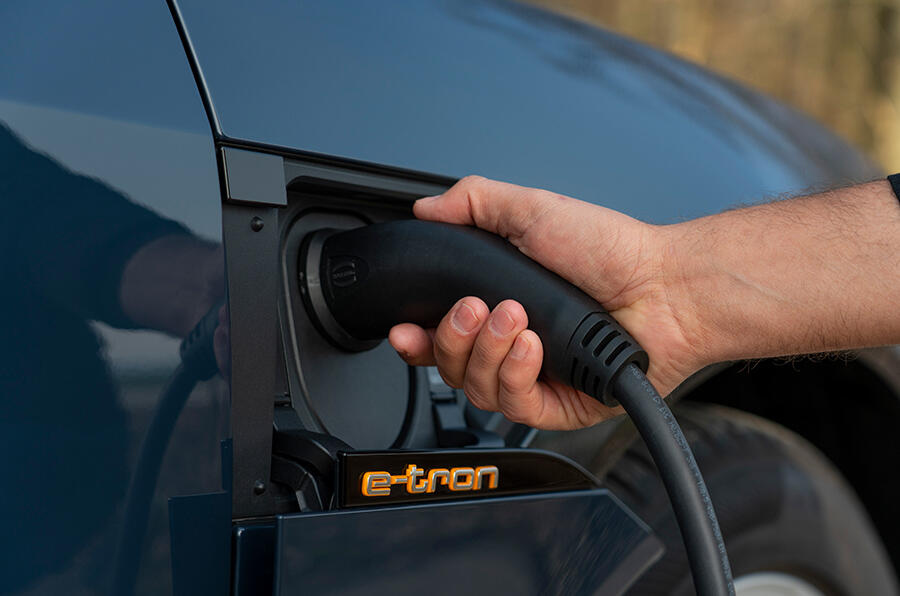
Battery technology
The advanced batteries in modern electric cars are a big step beyond traditional batteries – boasting greater capacity, extended range and faster charging. And there is plenty more to come…
Lithium-ion battery: The battery tech currently favoured by the car industry. Lithium-ion batteries offer impressive capacity for increased all-electric range. They’re also highly efficient for charging and repeat recharging, with a long lifespan. Audi’s lithium-ion batteries all come with a warranty for 8 years or 100,000 miles[1]. Lithium-ion batteries can be packaged low down in a car for improved handling, and in packs that can expand to offer a choice of range for customers. On the new Audi Q4 e-tron, the 55kWh battery offers up to 208 miles of range, while the larger 82kWh battery delivers up to 314 miles of range. Lithium-ion batteries can also be charged at different speeds, offering long slow cost-effective overnight charging, or ultra-rapid 135kW public charging that can deliver 87 miles of range in as little as 10 minutes. They’re incredibly versatile.
Solid-state battery: The next generation of electric car battery tech. Solid-state batteries use advanced construction that is more energy dense and easier to cool than lithium-ion batteries. This should enable the creation of battery packs that offer significantly more electric range of lithium-ion packs and which can charge significantly faster, or smaller or lighter battery packs for city cars. Audi is already investing in solid-state battery technology that could make its way onto production cars as early as 2025.
Supercapacitor: A highly advanced form of battery that is incredibly fast to recharge, including through wireless charging. Supercapacitors are also lighter than lithium-ion or solid-state battery packs, but they lose charge quite quickly – which means they need to be charged more regularly. As a result, supercapacitors work well as part of a hybrid powertrain or supporting an electric powertrain with fast recharging.
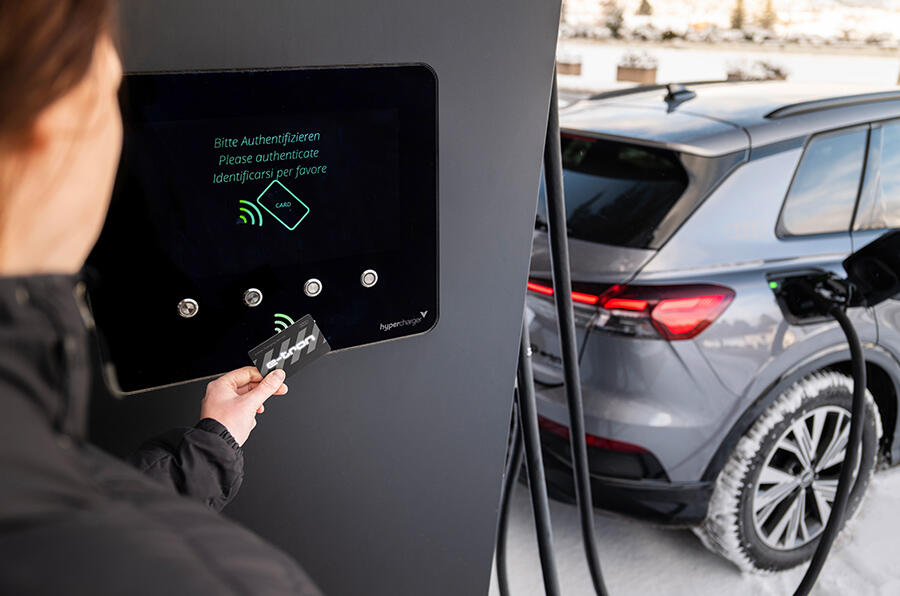
Cost benefits and tax
In addition to the reduced charging costs of an electric car, there are lots of additional benefits when it comes to daily and annual running costs.
CCZ (Congestion Charge Zone) / ULEZ (Ultra Low Emissions Zone) / CAZ (Clean Air Zones): To combat increased urban pollution, local administrations are introducing charges for older petrol and diesel vehicles to enter city centres. London’s Congestion Charge Zone – with its minimum £15 charge for non-compliant vehicles – is perhaps the most famous. Lots of other cities are also planning congestion zones or clean air zones. The good news: all-electric vehicles and plug-in hybrid vehicles with extended range will typically be exempt from many of these charges.
VED (Vehicle Excise Duty) road tax: As of the 2022/23 tax year, all-electric cars – like the Audi e-tron, Audi Q4 e-tron and Audi GT e-tron – are currently exempt from paying VED road tax.
Government grants: Given the massive surge in interest and growth in sales for electric cars, the UK government has closed a number of grants that were used to incentivise the take-up of EVs – including the Office for Zero Emission Vehicles (OZEV) Plug-In Grant and the Electric Vehicle Homecharge Scheme (EHVS) for home charger installation. If you live in an apartment building or rental accommodation, though, you can still apply for an EV home chargepoint grant – which will provide 75% (or up to £350) off the cost of installing a home charger.
Benefit-in-kind (BIK) tax: Picking a plug-in hybrid or all-electric car offers real benefits for fleet and company car drivers, with significantly lower contributions under the benefit-in-kind (BIK) scheme. For the 2022/23 tax year, BIK rates are currently set at 2% for all-electric models, while some Audi plug-in hybrid models offer a BIK rate that can be as low as 8% for models that emit less than 50g/km of CO2 while offering electric range of 40 miles to 69 miles. That includes plug-in hybrid Audi models such as the Audi A3 TFSI e, the A6 TFSI e quattro and the Audi A7 Sportback TFSI e quattro.
Local authority incentives: Many local authorities are offering additional incentives for going electric, with reduced costs residents’ parking permits and Green Vehicle Permits that allow the use of bus lanes, free parking in certain car parks and even free charging on certain public charging stations. Check your local authority website for details.
Learn more about the Audi e-tron range
[1] Please note: Audi’s 8-year 100,000-mile EV battery warranty covers faults in materials and workmanship, but doesn’t cover degradation of usage.




